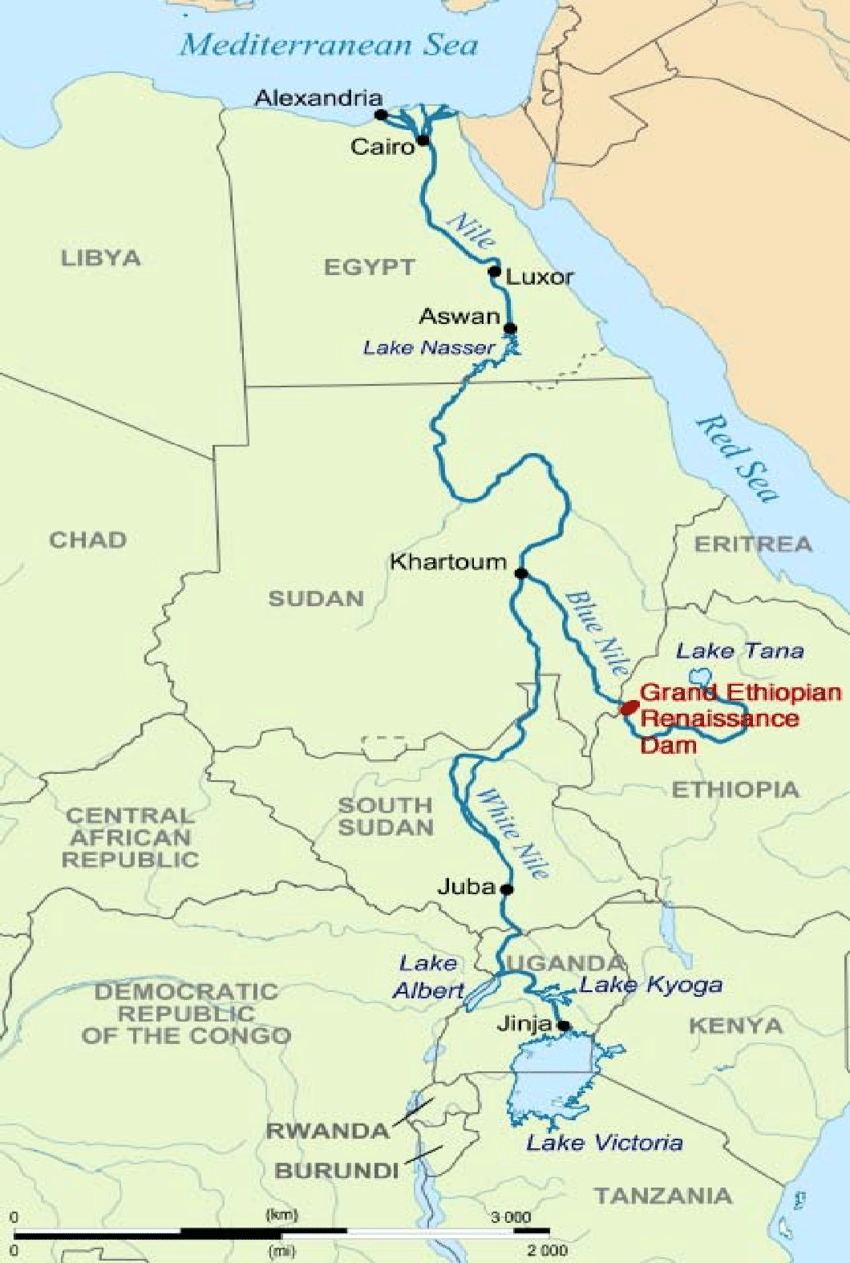Water conflict case study: Nile
EXAMPLE OF TRANSBOUNDARY WATER CONFLICT BEING “IMPOSSIBLE” TO SOLVE
- The Nile is 6,700km long and is shared between 11 nations.
- There is a history of conflict between these nations over the river which is a vital resource.
- Egypt has even threatened any country upstream of them that tries to dam the Nile River with War.
- In 1929, a Nile agreement between Egypt and the UK (Sudan was a British Colony at the time), gave Egypt complete anonymity over developments on the Nile. This agreement did not include any other countries that border the Nile (gave Egypt and Sudan rights to nearly all of the Nile waters).
- In 2011, Ethiopia began the construction of a Grand Ethiopia Renaissance Dam, which Egypt contested.
- In March 2015, Egypt, Ethiopia, and Sudan signed an agreement over the Dam. This has still not resolved the problems surrounding other Nations’ rights to water.

- <<Egypt relies on the Nile for 90% of its water → as the population grows, water becomes more scarce.<<
- <<The Blue Nile tributary in the northern Ethiopian highlands is where 85% of Blue Nile waters flow.<<
- The Grand Renaissance Dam which Ethiopia is building (GERD), will be Africa’s biggest hydroelectric plant.
One of the North African country’s main concerns is that if the water flow drops, it could affect Lake Nasser, the reservoir further downriver, behind Egypt’s Aswan Dam, which produces most of Egypt’s electricity. Egypt fears it could restrict its already scarce supply of the Nile waters, which is almost the only water source for its citizens. If the waters were to drop it would affect transportation on the Nile and it would affect the livelihood of farmers who depend on the water for irrigation.
Egypt’s fear that the project will allow Ethiopia to control the flow of Africa’s longest river is because Egypt is so heavily dependent on it.
- Egypt has had political power and dominance over the Nile since ancient Egypt (shift in power).
- Egypt depends on the Nile with 98% of its population living alongside it (population nearing 100 million).
- Ethiopia wants to build the dam in 6 years, Egypt has proposed a longer period so that the level of the river does not dramatically drop, especially in the initial phase of filling the reservoir.
The £3bn dam will solve Ethiopia’s acute shortage of electricity, with 65% of its population not connected to the grid.
- The dam project does not rely on external funding and relies on gov. bonds and private funds to pay for the project - a matter of national sovereignty AND wouldn’t create further debt by borrowing money to fund this project.
It would also benefit neighbouring countries including Sudan. South Sudan and Kenya from the power generated by the dam.
- Many neighbouring countries such as these have huge power deficits.
- For Sudan, there is the added advantage that the flow of the river would be regulated by the dam - meaning it would be the same all year round. Usually, the country suffers from serious flooding in August and September.